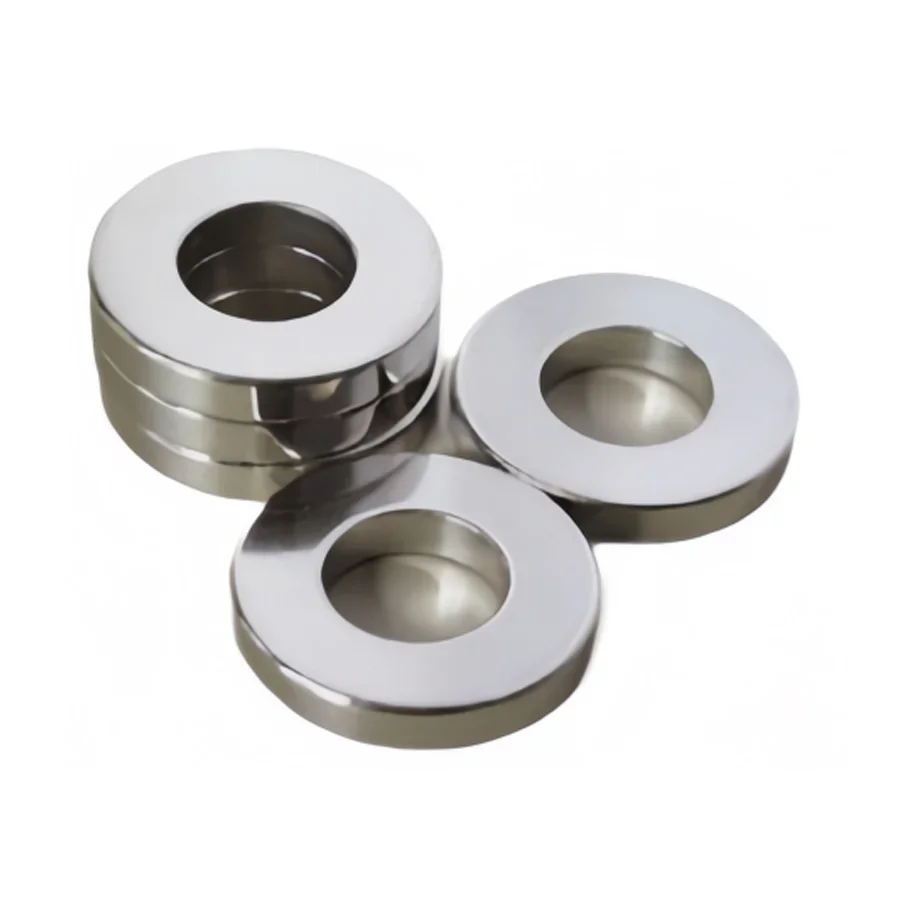- This topic is empty.
-
AuthorPosts
-
2024-07-22 at 6:24 pm #23255
Ring sintered NdFeB magnets are powerful and versatile magnets widely used in various industries, including automotive, electronics, renewable energy, and more. These magnets possess exceptional magnetic properties, making them crucial components in many applications. However, the manufacturing process behind these magnets is complex and requires precision and expertise. In this blog post, Zhonghang Company will delve into the intricate manufacturing process of ring sintered NdFeB magnets, exploring the steps involved and the technologies employed to create these remarkable magnetic components.
1. Raw Material Preparation
The manufacturing process of ring sintered NdFeB magnets begins with the preparation of raw materials. The primary components of these magnets are neodymium (Nd), iron (Fe), and boron (B). These elements, along with other additives such as dysprosium (Dy) and praseodymium (Pr), are carefully measured and mixed in precise proportions. The raw materials are then subjected to a thorough blending process to ensure a homogeneous mixture.
2. Melting and Alloying
Once the raw materials are properly mixed, they undergo a melting and alloying process. The mixture is placed in a vacuum induction furnace, where it is heated to extremely high temperatures. This process allows the elements to melt and form a molten alloy. The alloying process is crucial as it ensures the proper distribution of elements and the formation of a uniform structure.
3. Powder Production
After the alloying process, the molten alloy is rapidly cooled, resulting in the formation of a solid material known as ingot. The ingot is then crushed into fine particles, creating a powder with the desired composition. The powder production stage is critical in achieving the desired magnetic properties of the final product.
4. Pressing
The next step in the manufacturing process is pressing the powder into the desired shape. The powder is placed into a die and subjected to high pressure using a hydraulic press. This pressure compacts the powder particles, creating a green compact with the approximate shape of the final magnet. The pressing process requires precision to ensure uniform density and eliminate any defects.
5. Pre-Sintering
Following the pressing stage, the green compact undergoes pre-sintering, also known as debinding. During this step, the compact is heated in a controlled atmosphere to remove the organic binders and other impurities. The temperature and duration of pre-sintering are carefully controlled to prevent any structural damage to the compact.

6. Sintering
Sintering is a critical stage in the manufacturing process, where the pre-sintered compact is heated to a temperature just below its melting point. This process allows the powder particles to bond together, resulting in a solid and dense magnet. The sintering temperature and time are precisely controlled to achieve the desired magnetic properties and structural integrity.
7. Machining and Shaping
After sintering, the magnet undergoes machining and shaping processes to achieve the final dimensions and desired tolerances. Various techniques such as grinding, cutting, and drilling are employed to shape the magnet into the required form, such as a ring. This stage requires skilled operators and specialized equipment to ensure accuracy and precision.
8. Surface Treatment
To protect the magnet from corrosion and improve its durability, a surface treatment is applied. Common surface treatments include nickel plating, epoxy coating, or a combination of both. These treatments provide a protective layer and enhance the magnet's resistance to environmental factors.
9. Magnetization
The final step in the manufacturing process is magnetization. The magnet is subjected to a strong magnetic field to align its magnetic domains, enhancing its magnetic strength. Magnetization can be achieved through various methods, including pulse magnetization, multi-pole magnetization, or radial magnetization, depending on the specific requirements of the application.
Conclusion
The manufacturing process of ring sintered NdFeB magnets is a complex and intricate journey that involves precise measurements, controlled heating, and expert handling. From the preparation of raw materials to the final magnetization, each step plays a crucial role in producing magnets with exceptional magnetic properties. Understanding this manufacturing process helps us appreciate the remarkable capabilities of ring sintered NdFeB magnets and their significant contributions to various industries.
https://www.zhsdmagnet.com/Manufacturing-process-of-Ring-sintered-NdFeB-magnet.html
http://www.zhsdmagnet.com
Zhonghang -
AuthorPosts
- You must be logged in to reply to this topic.